Google Analytics (GA) is a free, powerful analytics tool that helps companies track the performance of their websites and marketing campaigns, gain insights into their customers, and uncover potential new market opportunities. For companies looking to expand globally, GA provides crucial information that can help you evaluate which markets have the most promise.
Currently, there are two GA platforms, Universal Analytics (UA) and Google Analytics 4 (GA4); however, UA will be sunsetted in 2023. This post shows you how to access reports in each GA platform that can help you identify which markets and languages to prioritize as you take the next step in your global expansion.
Use website metrics to guide your global expansion
GA helps you track a wide range of website metrics, which can tell you a lot about your business, including where your localization spend may generate the most value. Specially, you’ll want to look at these reports:
Location of visitors to your website
Both UA and GA4 can give you a pretty accurate picture of the countries, regions, and cities where your website visitors are located. To find global expansion opportunities, you’ll need to assess several different types of metrics, including traffic, engagement, and conversions if you have an eCommerce site. Note that some of these metrics are named and defined differently between the two GA platforms.
Individual metrics to pay attention to include:
- Users
- New users
- Sessions/engaged sessions
- Bounce rate/engagement rate
- Pages per session
- Engaged sessions per user
- Average session duration/average engagement time
- Conversion rate/conversions
Countries and regions that have a lot of traffic but little engagement and low conversion rates could signal that a lack of localized content is costing your company customers.
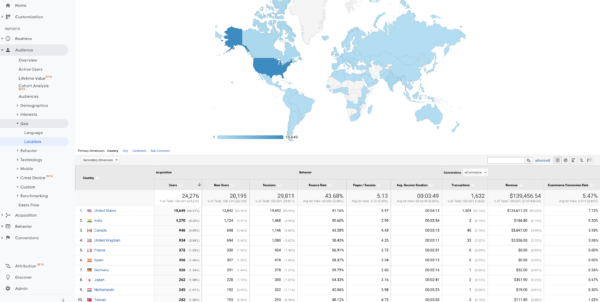
To access the report in UA:
- From the sidebar on the left, expand the Audience menu
- Expand the Geo submenu
- Click on Location
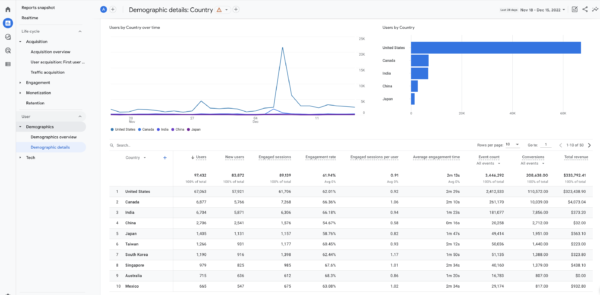
To access the report in GA4:
- From the sidebar on the left, select the Reports icon
- Expand the User menu
- Expand the Demographics submenu
- Click on Demographics details
- At the top of the first column within the report, select Country from the dropdown menu
Preferred language of your website visitors
Both GA platforms offer a report that shows the languages set in your website visitors’ browsers. Similar to location data, you can use this information to find languages with high traffic but low engagement and conversions where localization efforts could help you reach a wider audience.
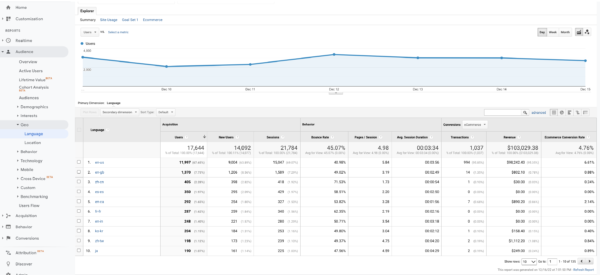
To access the report in UA:
- From the sidebar on the left, expand the Audience menu
- Expand the Geo submenu
- Click on Language
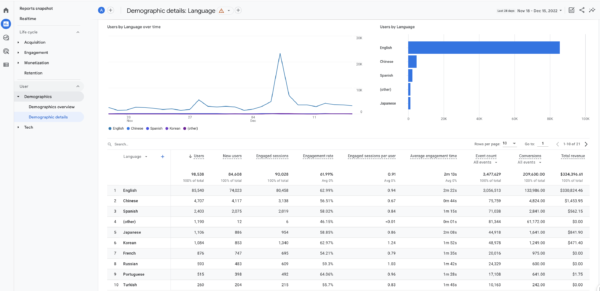
To access the report in GA4:
- From the sidebar on the left, select the Reports icon
- Expand the User menu
- Expand the Demographics submenu
- Click on Demographics details
- At the top of the first column within the report, select Language from the dropdown menu
Using A/B testing to further explore local markets
Once you’ve identified some potential markets from these reports and other information, such as data on the local population and your product market share, you can further evaluate the opportunity by running small-scale email campaigns with localized content. These results can help you decide if you want to invest further in this particular market with an expanded marketing campaign.
To get the information you need, consider using A/B testing to compare the performance of your campaign in the default language against a version localized for your target audience. You can track email metrics, such as opens and clickthrough rates, and landing page performance, including bounce rate/engagement rate, conversions, and revenue.
While it’s possible to use GA to track email metrics, it can be tricky to set up and doesn’t always perform well with web-based email systems, notably including Gmail. Most marketers rely instead on their marketing automation platforms and email service providers for this information.
However, GA does provide robust information on how your campaign landing pages are performing. This report is available out of the box with UA. However, you will need to set it up in GA4, and you’ll find detailed steps below to help you do that.
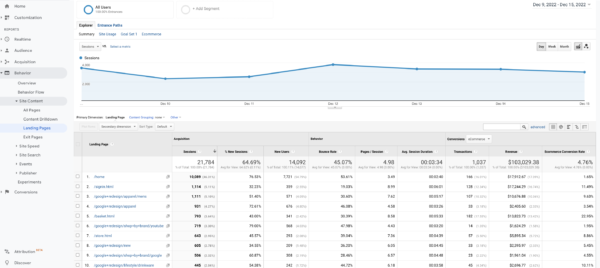
To access the report in UA:
- From the sidebar on the left, expand the Behavior menu
- Expand the Site Content submenu
- Click on Landing Pages
- Scroll or search for the URL of your campaign landing page
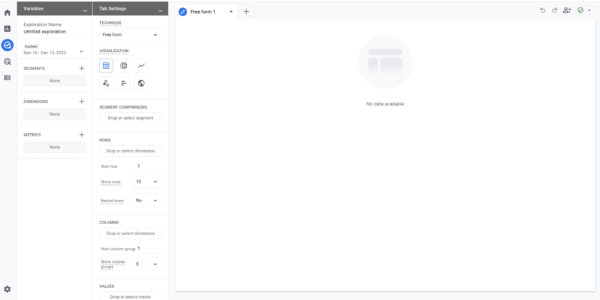
To create the report in GA4:
- From the sidebar on the left, select the Explore icon
- Click on the blank report template
- Rename your report “Landing pages”
- Click the plus sign (+) beside Dimensions
- In the expanded Dimensions box, enter “landing page” in the search bar, click the box next to the landing page result, and click Import
- Under Dimensions, double click landing page. This adds it to the Rows section. See below for what your screen will look like. Note that nothing will populate yet in the blank space to the right.
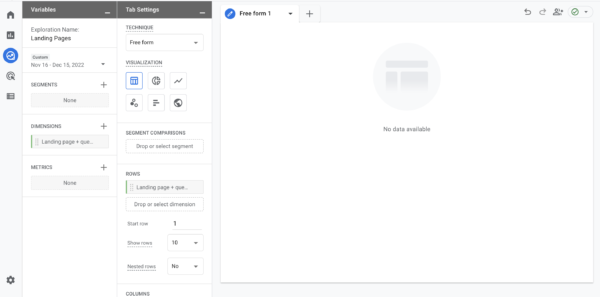
- Click the plus sign (+) beside Metrics
- In the expanded Metrics box, search for the specific metrics you’re interested in tracking and select each one by checking the box next to it. When you’ve finished selecting all the metrics, click Import. In this example, we’ve included:
– Views
– Sessions
– Engaged sessions
– Total users
– Engagement rate
– Average engagement time per session
– Conversions
– Total revenue
Once you’ve completed this step, your screen will look like this:
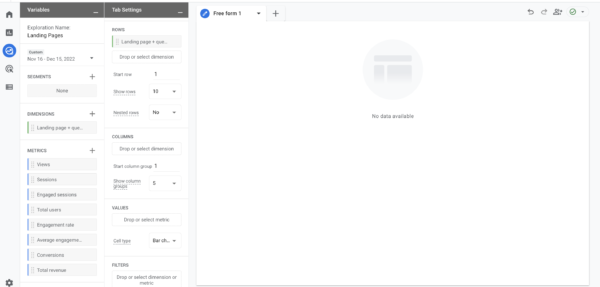
- Double click on each of the metrics to add them to your landing page report.
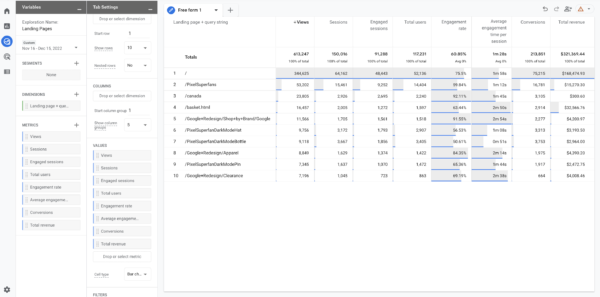
You’re now ready to track the performance of your English-language versus localized campaign landing pages.
Take the next step with a strategic translation and localization partner
Identifying potential new global audiences is an important first step. Partnering with a professional localization and translation company can help you act on this information and maximize your investments in new markets. At Acclaro, we work with you to find the right approach for achieving—and exceeding—your globalization goals. Get started today to learn how we can help you capitalize on new opportunities around the world.
Insights for global growth






Power your strategic growth
Go beyond tactical localization with tailored, strategic solutions that resonate locally and drive growth globally.
Get started